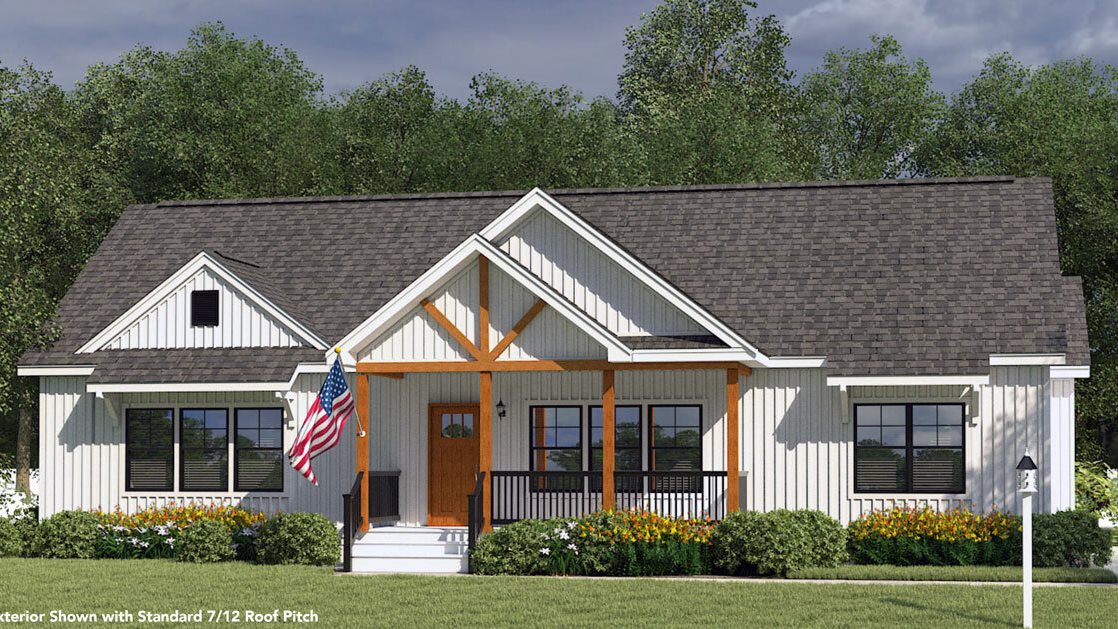
Modular construction generates less waste
In a tough real estate market، a century-old housing idea could make a comeback

A century ago، a first-time homebuyer might begin their search in a catalog for akit-built home from Searsand others. In today’s real estate market، the idea rarely registers in house hunting. But withaffordability stretched to an extremeand more buyersthinking about sustainability، the modular home — the kit home’s descendent — could be poised for the spotlight.
In the least، U.S. consumers looking to build an efficient and sustainable home should consider going modular. Green construction experts generally agree that modular construction generates less waste and causes less disruption to plants and animals on building sites. And instead of thousands of pieces of lumber، nails، and roofing material that you’d have received with those century-ago kits، modular homes today come in fewer but far larger pieces — assembled in a manufacturer’s facilities، then shipped to the home site، where they’re assembled together. In fact، the modules that make up a modular home can be the size of whole rooms. Typically، it is only the home’s foundation that is actually built on-site.
Advantages of modular construction
Modular construction has also attracted interest from affordable housing advocates withmortgage rates، though now on the decline، having reached as high as 8% this year andhome prices upin almost every major metro market. The first of up to 2،000 single-family modular homes are being assembled in Chicago’sSouthsideand will be available for about a $1،000 down payment thanks to a partnership between city and state governments and area non-profits. A smaller affordable modular home project is planned for theMaryland suburbsoutside Washington، D.C. Modular dwellings have also been used to combat homelessness in theU.S.،Canada، andelsewhere. Theissue was raised this weekin the op-ed section of the New York Times.
Modular housing can be lower cost
Modular homes have to comply with state and local building codes، and they are financed the same as traditional construction. The difference is price. Modular construction averages $80 to $160 a square foot، which is 10-20% cheaper than traditional construction، according toHomeGuide. That puts the cost of building a typical modular home at $120،000 to $270،000 compared to $155،000 to $416،000 for traditional construction.
The modular building method can save money due to scale. “We have seen offsite construction of repeatable modular units save as much as 25 percent of vertical construction costs،” said Dave Dauphinais، associate partner at the management consultant McKinsey & Company.
Based on these construction costs، down payment and monthly mortgage expenses for a 30-year fixed mortgage at 7.25% interest would be $13،500 and $1749.78/monthly for a high-end modular home، versus $20،800 and $2،695.96/monthly for a traditional top-end $416،000 home، according to Rocket Mortgage.
Several venture capital firms have invested in modular construction، including Khosla Ventures and Y Combinator. One of the larger recent deals was led by Waed Ventures and Bold Capital this September، a $52 million funding round forMighty Buildings، a startup in the sustainable، modular-home space that uses 3-D printing to automate the construction process.
The net-zero lifestyle goes well with prefab homes
Some modular dwelling manufacturers specifically cater to consumers looking to maximize efficiency or to attempt net-zero living. This includes Deltec Homes، Dvele، and S2A Modular، which all include solar panels in their residential home options.
“Modular home building has come a long way and is worth considering as prefabrication done well can reduce waste and the associated carbon emissions،” said Lisa Carey-Moore، director of buildings at the International Living Future Institute، a nonprofit that promotes regenerative building practices.
Generally، the modular assembly method can use less materials than traditional construction methods – where everything is built on site – because there’s more control over the building process and less chance wood، tile، roofing and other materials will be stolen، damaged، or wasted. It’s also easier to recycle excess materials in a factory setting than on the typical outdoor job site or use excess material from one job on a later one.
More than 15 percent of the materials used to construct a home the traditional way can end up as waste، but waste with modular construction is only about five percent، noted Ryan McEvoy، founder and principal of a sustainable building consulting firm called Gaia Development.





-1120252475029447.jpg)
-920252122624392.jpg)
















